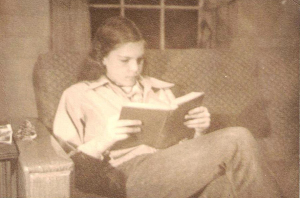
Celia Miles is one of Mountain Made’s most prolific novelists. She has over 8 books on our shelves yet she considers herself to be a “nicheless author” since she has written everything from technical manuals to novels to short stories and anthologies.
Celia is a native of Appalachia, born in Western North Carolina, and, except for brief stints in Massachusetts and Virginia, plus college in Kentucky and Pennsylvania, has lived here all her life. A long-time English instructor at Asheville-Buncombe Technical Community College, she is retired and living in Asheville.
In addition to freelance editing and writing in various genres since her retirement, she somehow makes times to travel to renew her love of old grist mills, and Neolithic sites, especially stone circles.
Below is Celia’s story … it the first Q&A interview we have done in our “Inside the Artist’s Studio” series.
…
As a child I couldn’t exactly visualize an adult career but I was sure it wouldn’t be housewifely-domestic since I read a lot and avoided kitchen and cleaning duties by being outdoors or having my “nose in a book.”

In high school I wrote a novel on Blue Horse notebook paper—set in faraway places with strange sounding names with handsome heroes and beautiful heroines. Fantasy land. And I ended up being a college English teacher!
I started writing fiction in the late 1990s, taking courses at AB Tech in “Writing the Romance Novel,” (and produced two sweet romances set on an herb farm), “Writing the Natural Way” (and started Mattie’s Girl: An Appalachian Childhood), “Writing the Novel” (put Mattie’s Girl pieces together).
Along the way I wrote for the confession market, short stories, and some articles and poetry. Since I’d co-authored a technical writing textbook, it was difficult to rid myself of the teacher syndrome of censoring creativity by fretting about correctness.
I still wear the editor’s hat—but only as a separate aspect of writing—a necessary aspect but sometime stifling in creating.
NOTE: Celia along with fellow author Nancy Dillingham, were co-editors and contributors, on the 241-page anthology CLOTHES LINES: stories and poems from 75 western North Carolina women writers.
Editing while writing is like constantly putting on the brakes when you’re going full speed ahead. So, once I found I could “write the natural way,” and self-publish, I’ve written three other novels: two historic and one contemporary, plus two collections of short stories.
About a writing schedule, it’s sporadic and haphazard, around the edges of other things, but once I start I write rapidly and repair/edit/check for consistency in names, dates, eye color, whatever later So I enjoy writing and editing—as different components of publishing.
An interesting writing quirk? I find I work well surrounded by clutter and coffee—and sometimes music.
Writing [my novel] , I played “Hard Times Come Again No More” constantly and with the sequel, “Sarranda’s Heart,” I played “How Can I Keep from Singing.” The songs’ motifs reflect the novels’ themes.
Write about what you know or love or want to learn about—that’s always said in “Tips for Writers” articles.
I guess I do that: my interest in old grist mills shows in three novels, plus, of course, my mystery; Neolithic sites and stone circles intrigue me, and “Journey to Stenness” is set near one in the Scottish island of Orkney and so it goes.
I don’t think I could write science fiction or gory thrillers.
When I’m not writing or loafing, I visit and photograph old mills, stone circles, make photo cards—and read.
I’ve always read mysteries (literary, cozy, thrillers) but had never tried to write one, so “The Body at Wrapp’s Mill” was a challenge—in response to the national challenge in November 2013 to write a novel in November.
I started—and finished the “required” 50,000 words and then kept on going—and edited later—and published in November 2014.
Somewhere around page 132 I realized I was having fun but I didn’t even know who the victim was. So I got serious.
Now I think I have a credible sleuth (a teacher who quit to become a mill restoration consultant) and maybe a sequel or two.
One of the surprising things I’ve realized in writing novels is that if I get my characters to talking, the plot develops from there. I
don’t always know where it’s going—that’s the fun part, though the mystery genre has certain expectations and so I had to do some directing of the plot—that ’s the hard part.
What makes a good story? For me: likeable, believable characters and a plausible story line that engrosses, appeals to the “better self,” and it doesn’t hurt that some sentences are so well written as to be savored.
Lately, having read two best-sellers that I disliked intensely, I realized that there has to be, again, for me, some redeeming quality in the characters, actions, or outcome.
Mysteries, of course, are never left totally unsolved—readers expect that the good/right to prevail if not without disaster or harm. There is much to be said for that expectation—in life and fiction.
The readers I hear from are uniformly kind, even if they pick up on some problem, and they usually say, “When’s the sequel?” I take that to mean I have said enough to satisfy the need for resolution and left enough unsaid to warrant the next book.
…
And just like her readers, we here at Mountain Made are looking forward to her next book, too!
We invite you to come by the gallery to browse our selection of Celia’s books — or if you are in a rush or live out of town her books are always available online in our estore.
Grove Arcade
One Page Ave, suite 123
Asheville, NC 28801

Mountain Made | Site Design by Sparking Design | Marketing by NC Web Diva